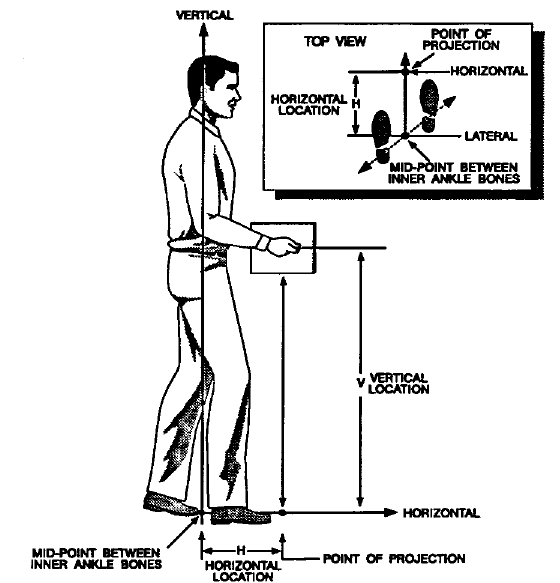Instructions
Most of the parameters are simple to collect and straightforward:
Task Type
Select the type of task from the pull-down menu.
Hand-Coupling (Lift/Lower only)
“Hand Coupling” refers to how good a connection the handler can get between the object and the load. Hand coupling is only input for lifting and lowering tasks. The following NIOSH definitions can be used to guide your choice of hand coupling:
| Coupling Type | Good | Fair | Poor |
|---|---|---|---|
| Description | For containers of optimal design, such as some boxes, crates, etc., a "Good" hand-to-object coupling would be defined as handles or hand-hold cut-outs of optimal design. For loose parts or irregular objects, which are not usually containerized, such as castings, stock, and supply materials, a "Good" hand-to-object coupling would be defined as a comfortable grip in which the hand can be easily wrapped around the object. | For containers of optimal design, a "Fair" hand-to-object coupling would be defined as handles or handhold cut-outs of less than optimal design. For containers of optimal design with no handles or hand-hold cut-outs or for loose parts or irregular objects, a "Fair" hand-to-object coupling is defined as a grip in which the hand can be flexed about 90 degrees. | Containers of less than optimal design or loose parts or irregular objects that are bulky, hard to handle, or have sharp edges. Lifting nonrigid bags (i.e., bags that sag in the middle). |
| Coupling Type | Description |
|---|---|
| Good | Comfortable handles or handhold cut-outs OR a comfortable grip in which the hand can be easily wrapped around the object. |
| Fair | Uncomfortable handles or handhold cut-outs OR a grip in which the hand can be flexed about 90 degrees. |
| Poor | Loose parts, nonrigid bags or objects that are bulky, hard to handle, or have sharp edges. |
For the calculation of the population percentiles, “Fair” and “Poor” have the same impact. Selecting “Fair” or “Poor” reduces acceptable loads by 16% and so decreases the population percentile. How much the population percentile drops with “Fair” or “Poor” hand coupling depends on the combination of other parameters of the task.
Frequency
Is the number of tasks per minute.
Weight of Object or Initial & Sustained Forces
For lifting, lowering, or carrying tasks, this is the weight of whatever is being handled, in pounds. For pushing and pulling tasks, you must measure two forces for each task:
- Initial force. This is the peak force needed to get the object to start moving as you push or pull it.
- Sustained force. This is the average force needed to keep the object moving as you push or pull it.
A force gauge is needed to take these measurements. Some suggestions on taking force measurements with a single-axis gauge can be found in Weston and Maras, 2020.
Start/End/Vertical Hand Height
The start height is the average height of the hands above the ground at the start of the lift/lower task. The end height is the average height of the hands above the ground at the end of the lift/lower task. For push, pull, and carry tasks, only the average hand height (“Vertical Hand Height”) above the ground is entered. If that height changes during the push, pull, or carry task, the start, end, and middle heights of the range of heights should be analyzed separately and the height that yields the lowest population percentile should be used.
Start/End Hand Distance (Lift/Lower only)
The start and end hand distances are the horizonal distances from the midpoint of the hands to the midpoint between the ankles at the start and end of the task. This measurement is the SAME measurement used by the Revised NIOSH Lifting Equation (the “H” in the diagram below).

The Liberty Mutual Manual Materials Handling Equations use the LONGER of the two start/end hand distance values.
Note that the Liberty Mutual Tables measured hand distance differently (from the FRONT) of the body to the centerpoint of the hands. The NIOSH measurement is approximately 9 inches longer than this old measurement.
Horizontal Distance (Push/Pull/Carry only)
The horizonal distance is the distance in feet that the object is pushed, pulled, or carried.
Weston, E.B. and Marras, W.S., 2020. Comparison of push/pull force estimates using a single-axis gauge versus a three-dimensional hand transducer. Applied Ergonomics, 88, p.103184.